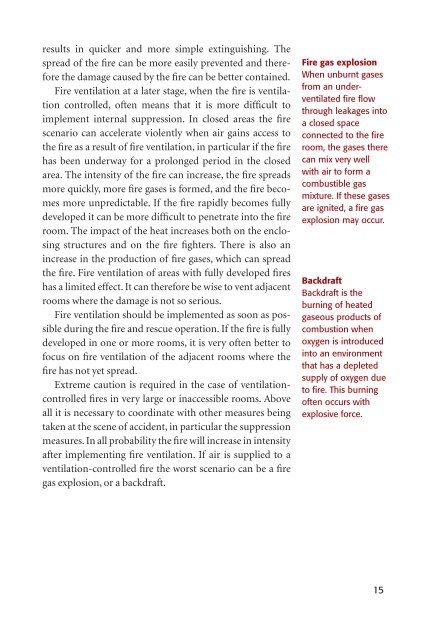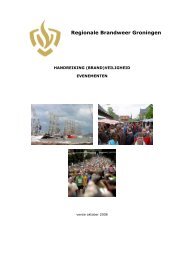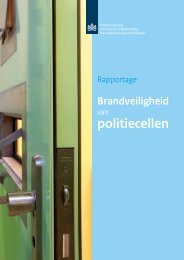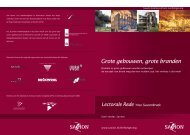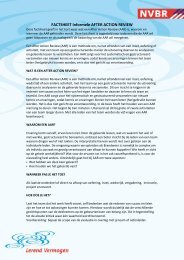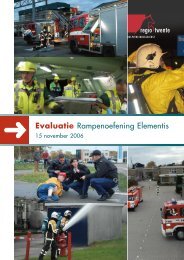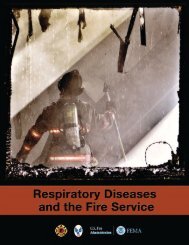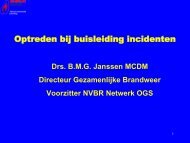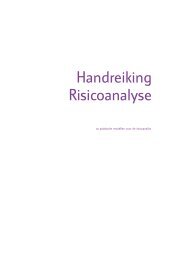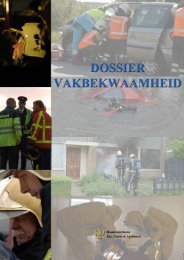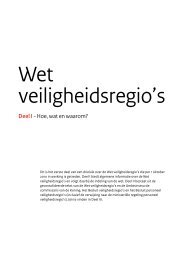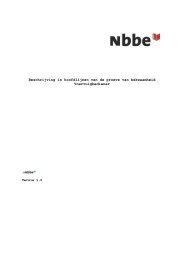Fire ventilation
Fire ventilation
Fire ventilation
- No tags were found...
Create successful ePaper yourself
Turn your PDF publications into a flip-book with our unique Google optimized e-Paper software.
esults in quicker and more simple extinguishing. Thespread of the fire can be more easily prevented and thereforethe damage caused by the fire can be better contained.<strong>Fire</strong> <strong>ventilation</strong> at a later stage, when the fire is <strong>ventilation</strong>controlled, often means that it is more difficult toimplement internal suppression. In closed areas the firescenario can accelerate violently when air gains access tothe fire as a result of fire <strong>ventilation</strong>, in particular if the firehas been underway for a prolonged period in the closedarea. The intensity of the fire can increase, the fire spreadsmore quickly, more fire gases is formed, and the fire becomesmore unpredictable. If the fire rapidly becomes fullydeveloped it can be more difficult to penetrate into the fireroom. The impact of the heat increases both on the enclosingstructures and on the fire fighters. There is also anincrease in the production of fire gases, which can spreadthe fire. <strong>Fire</strong> <strong>ventilation</strong> of areas with fully developed fireshas a limited effect. It can therefore be wise to vent adjacentrooms where the damage is not so serious.<strong>Fire</strong> <strong>ventilation</strong> should be implemented as soon as possibleduring the fire and rescue operation. If the fire is fullydeveloped in one or more rooms, it is very often better tofocus on fire <strong>ventilation</strong> of the adjacent rooms where thefire has not yet spread.Extreme caution is required in the case of <strong>ventilation</strong>controlledfires in very large or inaccessible rooms. Aboveall it is necessary to coordinate with other measures beingtaken at the scene of accident, in particular the suppressionmeasures. In all probability the fire will increase in intensityafter implementing fire <strong>ventilation</strong>. If air is supplied to a<strong>ventilation</strong>-controlled fire the worst scenario can be a firegas explosion, or a backdraft.<strong>Fire</strong> gas explosionWhen unburnt gasesfrom an underventilatedfire flowthrough leakages intoa closed spaceconnected to the fireroom, the gases therecan mix very wellwith air to form acombustible gasmixture. If these gasesare ignited, a fire gasexplosion may occur.BackdraftBackdraft is theburning of heatedgaseous products ofcombustion whenoxygen is introducedinto an environmentthat has a depletedsupply of oxygen dueto fire. This burningoften occurs withexplosive force.15


